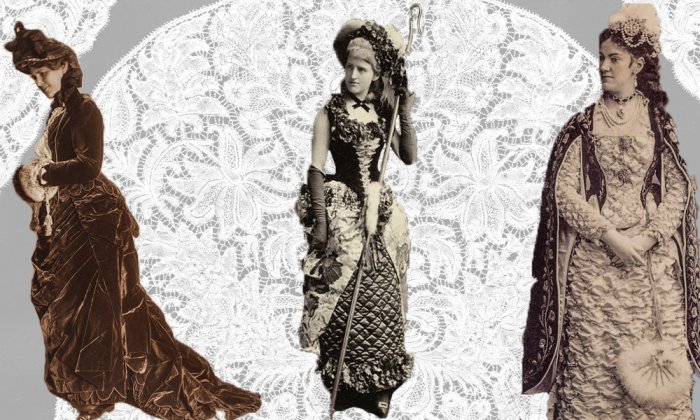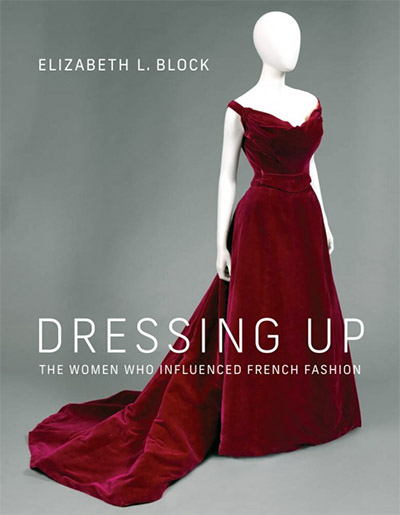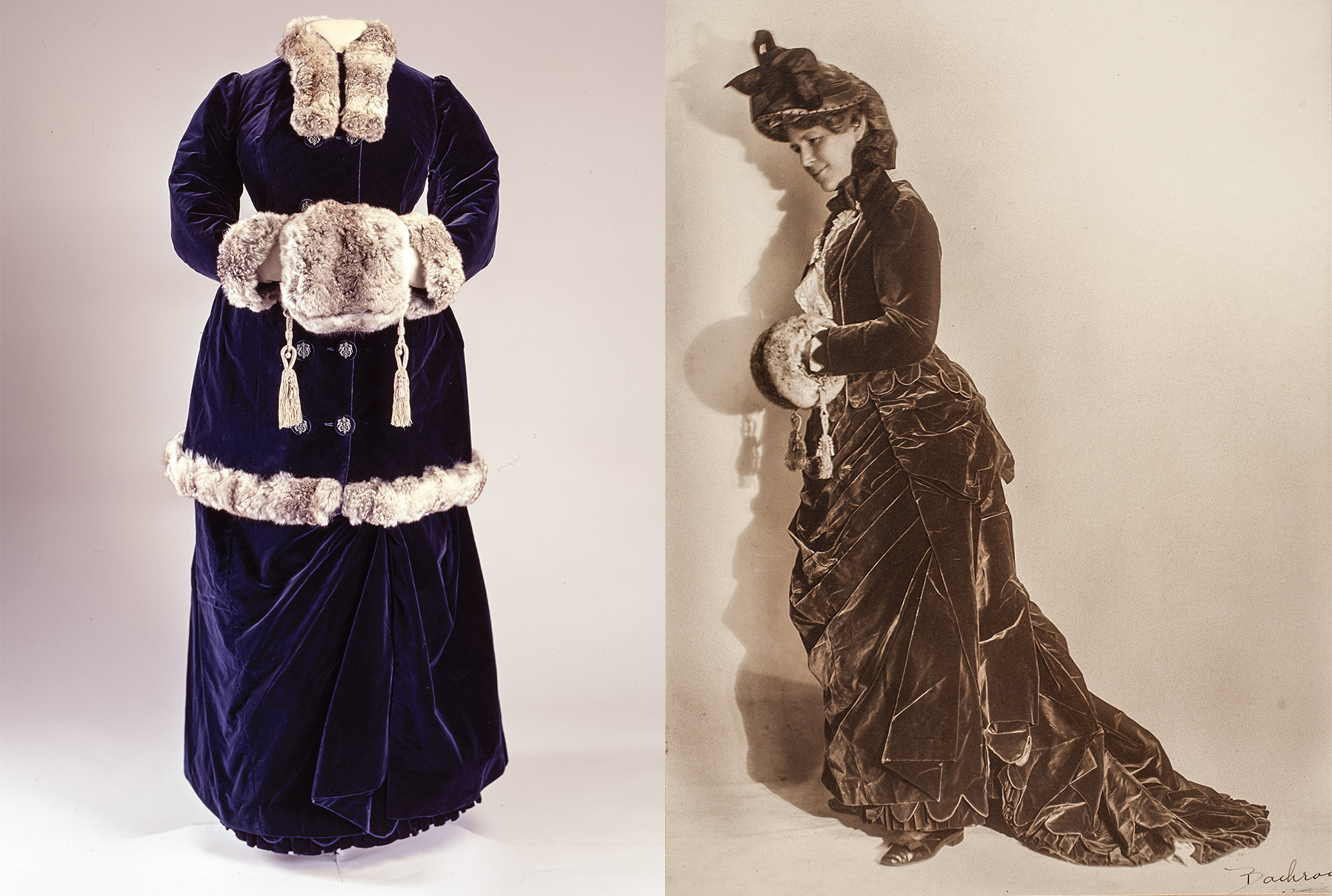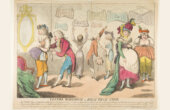Lessons in Reuse From... French Couture?

In the wake of COP26’s (26th United Nations Climate Change conference) fervent call for the world to take action against climate change, fashion leaders continue to step up their efforts. Chloé became the first luxury brand to obtain the coveted “B Corporation status,” and now brandishes this seal of approval signaling its pledge to reduce harm to people and the planet by using renewable energy and ethically sourced materials, among hundreds of other initiatives.
Patagonia’s Worn Wear hub is a leader among brands in the trade-in used, but still usable, clothing category. It dovetails with the ever-growing “responsible shopping” thrifting companies ThredUp (founded 2009), Poshmark (founded 2011), and The RealReal (founded 2011). Publicly traded, the three are high-growth, but not yet high-profit.

Meanwhile, the fashion press, especially WWD, is tracking fraudulent claims to so-called conscious practices by luxury brands like Coach, which was caught destroying massive amounts of imperfect handbags rather than repairing or repurposing them. Social media influencers publicly shame them, while podcasters weigh in on brand wins and missteps. Fashion journalist Amy Odell, author of the independent “Back Row” newsletter, has her eye on bogus company statements. Among her predictions for 2022: “Bullshit ‘sustainability’ claims will continue in earnest, though they should soon face harsher regulation in the U.S.” She notes, “this year the Federal Trade Commission is due to revise its Green Guides, which ‘are designed to help marketers avoid making environmental claims that mislead consumers.’”
With “values-based shopping” and “sustainability in product choice” on the climb, now is an apt moment to have a look at how these practices resonate with those of the past. How do current efforts by designers and buyers measure up to their fashion ancestors, like the maison Félix and the House of Worth, and their savvy, international clients? What can we learn from the 19th-century commitment to reusability and upcycling, quality over quantity?
In the late 19th century, French couture was the ultimate in luxury shopping for wealthy U.S. women. The women who spent thousands of dollars on French gowns maximized their investment by repurposing them — wearing them on multiple occasions over the course of several seasons or years, not unlike what they did with their most valuable pieces of jewelry. They either wore a gown in its original form, reaccessorized it, or hired the original maker or a local dressmaker to rework it. The practices reflect the value placed on sumptuous textiles and were well ensconced in European royal culture. As historian and curator Kate Strasdin describes in “Inside the Royal Wardrobe: A Dress History of Queen Alexandra,” Alexandra, Princess of Wales, had her British-made wedding gown converted by her dressmaker, Madame Elise and Co., into an evening dress only a few days after her wedding with Edward VII in March 1863. Strasdin tells us that for the Marlborough House ball in 1874, the Elise firm appears to have remodeled a costume that Alexandra wore to the 1871 Waverley ball in London. The gown bears the Elise label and is kept today in the Royal Ceremonial Dress Collection at Kensington Palace.
When attending two separate court functions in London in March and July 1893, Mary Endicott Chamberlain wore the same House of Worth pale blue silk dress with lace, beading, and velvet. The first event was a reception in Queen Victoria’s drawing room at Buckingham Palace, and the second was the wedding of the Duke and Duchess of York (later King George V and Queen Mary). She also made a practice of sending her Worth gowns back to the maison for remodeling, as she did when she wanted a Van Dyke lace collar attached to a red satin dress.
Many elite gowns became heirlooms, written into wills, with the inheritors then choosing how they would wear them, with or without alterations.
Upper-class U.S. women adopted the royal precedent for repurposing garments early in the century. When Elizabeth Patterson of Baltimore married Jérôme Bonaparte in 1803, she wore an embroidered white muslin dress that she subsequently wore on multiple occasions. Nancy Fowler McCormick’s French dresses, now in the Chicago Historical Society, show signs of alterations for rewearing. With her husband, millionaire Cyrus Hall McCormick, she attended numerous social events, and in 1904, she wore a gown by Worth to her son’s wedding.
Many elite gowns became heirlooms, written into wills, with the inheritors then choosing how they would wear them, with or without alterations. In her memoir, Alva Vanderbilt Belmont recalled how strongly she and her siblings valued a camel-hair shawl and the lace flounces from their mother’s wedding outfit that were left to them in her will. Both Alva and her daughter, Consuelo, later used the lace on their own wedding dresses. Similarly, a dark blue velvet ensemble with chinchilla fur trim bearing the label of maison Lipman was purchased by philanthropist Caroline Louisa Williams French of Boston, Massachusetts, in 1883 for 1,600 francs. The maison, run by Madame Camille Lipman, was in operation in Paris in the 1880s, and counted among its clients queen consort Maria Pia of Portugal. Some 37 years later, French’s descendant, Alice Williams Pearse, wore the gown and chinchilla muff, without the coat, in a photograph taken at an event to celebrate the Nineteenth Amendment, which granted voting rights to women. The garments and photographs are now in the collection of Historic New England. The string of donations by Orme Wilson Jr. and Richard Thornton Wilson III of gowns by the Houses of Worth, Doucet, and Paquin to The Metropolitan Museum of Art further provides a sense of how couture garments passed through the branches of one family. The Wilson brothers were sons of William Backhouse Astor Jr. and Caroline Astor’s daughter Carrie.

For events like the centennial balls that took place across the country in 1876, women commissioned dresses to be modeled on those worn by their ancestors in portrait paintings and photographs. Couturiers who were regularly engaged to make historically inspired stage costumes were well equipped to make reproduction gowns. Some women utilized pieces from their personal antique lace holdings for the occasions, as did the Astors, who collected Flemish and French 18th-century lace, fragments of which have survived. At the wedding of her daughter Helen to James R. Roosevelt in 1878, Caroline Astor proudly wore a black velvet gown with 200-year-old lace trimmings.
Another outlet for reuse came via castoffs from owners to their maids or to charity recipients. Caroline Astor donated dresses to a women’s hospital, and Cornelia Stewart, who was married to retailer A. T. Stewart, reputedly passed some of hers to a singer in need of stage wear. As Diana de Marly (author of “The History of Haute Couture”) and Kate Strasdin have shown, the practice was an outgrowth of the European convention of royalty handing down their finery to their ladies-in-waiting, as did Queen Victoria and Alexandra, Princess of Wales. Yet another stream was to sell gowns to secondhand dealers, descendants of the long-established history of the European trade in old clothing. In Paris, the trade had been in existence since the 13th century, and by the 18th century, it was centered in the Les Halles neighborhood. In the 19th century, there were dress agents to whom royals would sell.
Since the early 18th century, England also had a history of selling royal and aristocratic clothes in the Old Clothes Exchange in East London, as Jennifer Le Zotte details in her book “From Goodwill to Grunge.” She further explains that in New York, large populations of recent European immigrants who had arrived between 1880 and 1920 fueled a robust secondhand trade on the Lower East Side, run mostly by Jews who had experience with peddling and tailoring. Some advertised in local newspapers offering to buy castoff garments. The advertising may have been necessary because the peddlers appear periodically to have been banned from buying garments at charity rummage sales. Anti-Semitism was in action here, as Jews historically were seen as dominating the trade, which had derived out of necessity when they had been outlawed from participating in professions and instead they took to itinerant, pushcart sales.
Performers became creative in how they obtained and disposed of their costly costumes. When opera singer Emma Abbott died in 1891, actress Jennie Kimball bought the gowns by Worth and Félix that Abbott had worn in “Carmen” several years earlier. Kimball purchased them for her daughter Corinne, a rising star on the stage. And when Elena of Montenegro could not make use of several new maison Félix gowns due to a period of mourning for the assassinated King Umberto I of Italy (killed by an anarchist), the couturier first placed them on view at the Exposition universelle in Paris in 1900. While visiting the exhibition, Francesca Redding admired the green silk and chiffon gown with winding leaf pattern, bought it, and promptly wore it on stage. Social maven Mary Rita Wilson Goelet’s wardrobe, carefully tracked in an archive of extant invoices, was reportedly sold after her death to the New York theatrical costumer Eaves and worn by various actresses. Finally, actress Sadie Martinot sold her own Worth and Félix stage gowns at auction in May 1894, raising $35,000 in income (equivalent to more than 1.1 million dollars today). Performers also sold their stage gowns to secondhand dealers with storefronts like the one described by the Sun in 1892 as “hung three and four deep with dresses and skirts and basques.”
The buyers at secondhand stores were middle-class women who were capable of making clothes last for several years. Hannah Ditzler Alspaugh of Illinois recorded in her diary and in her scrapbook of fabric the dresses and suits that she would remake, or “rip,” over the years, including one suit that she wore for several visits to the World’s Columbian Exhibition in Chicago, an event that notably, was held during a nationwide financial panic in 1893. With careful planning and maintenance, garments could be preserved and worn with frequency. Multiple layers of undergarments served as a barrier between bodily oils and dirt and the main part of the dress, although rain, mud, moths, and mold caused further concerns.
In the late 19th century within the uppermost social circuit, there was no stigma to undo.
The practices of obtaining desired goods and then reusing, circulating, and exchanging led to the wide dissemination of French couture in collections around the world. As Strasdin points out, Queen Alexandra’s gowns were auctioned by the American Art Association and Anderson Art Galleries in 1937, where Irene Lewisohn purchased a quarter of them and founded the Costume Institute at The Metropolitan Museum of Art.
Although the materials were hardly socially conscious in today’s conception — furs, rare bird feathers, and even headresses with taxidermied small animals were desirable — we may appreciate the period’s inherent, accepted practices of reuse and what we now call upcycling. Alongside the luxury aspects of French couture they were buying, U.S. women brought a certain pragmatism to the marketplace. ThredUp, Poshmark, and the RealReal prioritize purpose, deliberately promoting the extension of a garment’s life as a virtuous consumer’s choice, distancing it as far as possible from any stigma of neediness. In the late 19th century within the uppermost social circuit, there was no stigma to undo.
To borrow terminology from fashion educator company Motif, U.S. women buying French fashion in the late 19th century put into motion a “circular model, in which garments were designed and developed with the next use in mind.” Buy high quality. Reuse or donate.
Elizabeth L. Block, an art historian, is Senior Editor in the Publications and Editorial Department at the Metropolitan Museum of Art in New York. Citations from this excerpt, adapted from her book “Dressing Up: The Women Who Influenced French Fashion,” have been reduced. For a complete list of sources, see the book.



